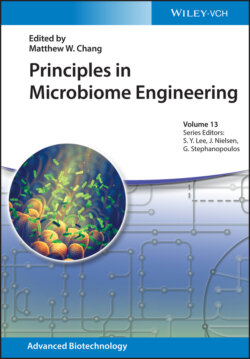Читать книгу Principles in Microbiome Engineering - Группа авторов - Страница 12
1.1 Introduction
ОглавлениеThe microbiota refers to the total population of microbes that co‐exist with the host, whereas the microbiome is the regulated genomic composition of the microbiota. The microbiome was initially coined to study the co‐existing relationship between microbes and the hosting environment by Mohr in 1952 but only gained attention and recognition in the genomic era during the early 2000s [1, 2]. Microorganisms are present everywhere in our daily lives, establishing transient or permanent interactions with the human host. It is estimated that around 10–100 trillion microbes are present in the human body [3]. Although many different types of microbes co‐exist in human bodies such as viruses, fungi, and protozoa, bacteria are the most well studied and represented for their largest proportion and intimate relation with human health. The microbiota is shaped by the host's biochemistry, nutrition intake, and lifestyle pattern. In kind the microbiome influences human health through nutritional processes, immunomodulatory functions, manipulating the host behavior, and influencing disease pathogenesis.
Thus, in this chapter, we will discuss how diet affects the host microbiome. The chapter will be divided into four parts. First, a general introduction to the basis of the host–microbiome and how various microbiomes interact with each other. Second, the varied diet–microbiome influence on different income, age, and location factors. The third subchapter 1.3 will look into the application of diet in shaping the microbiome to treat various diseases. Lastly, the global outlook of opportunities and challenges in microbiome data study to achieve global health.
